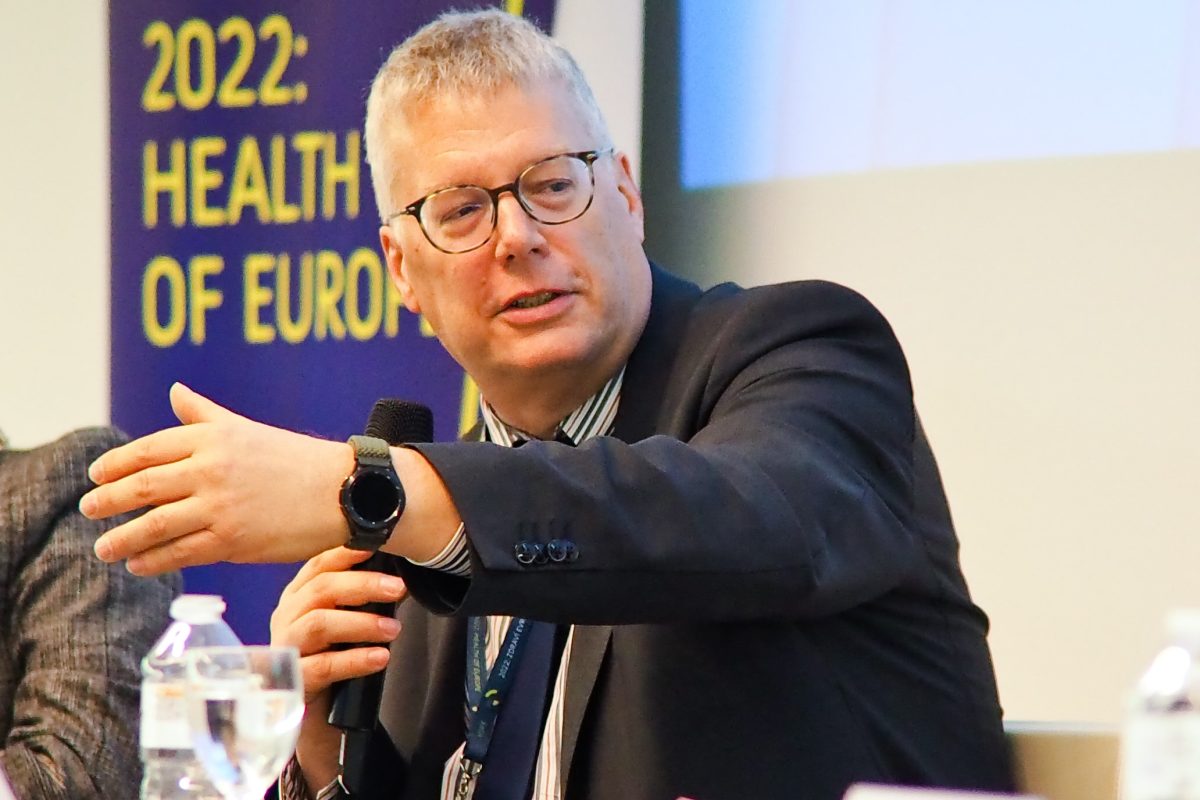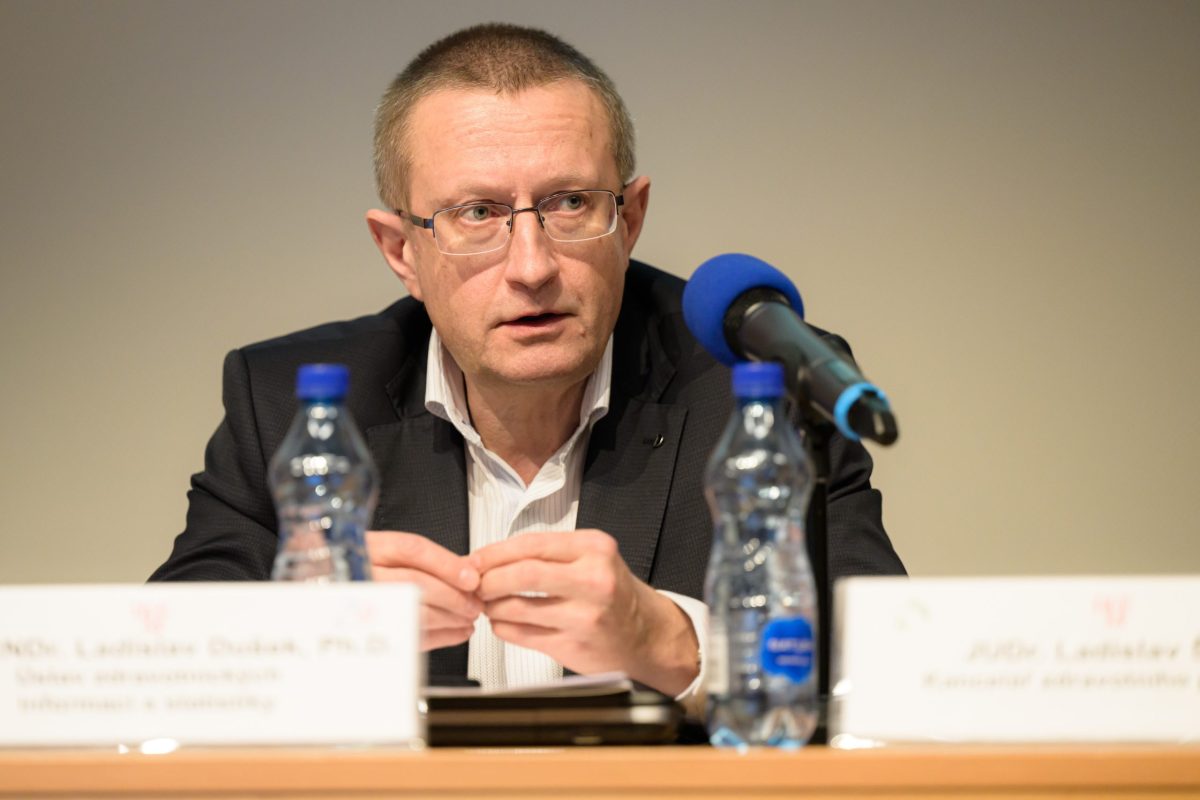Medical innovation has been progressing rapidly as well as the discussion on the need to update the regulatory processes regarding medicinal products. This is also behind the current debate on the Pharmaceutical Strategy for Europe introduced by EU Health Commissioner Stella Kyriakides in autumn 2020. These are game-changing moments, says Ansgar Hebborn, Chair of European HTA Working Group of the European Federation of Pharmaceutical Industries and Associations (EFPIA) and Roche´s Head of EU Access Policy Affairs. Zdravotnický deník talked to him during the conference on the Pharmaceutical Strategy for Europe – Implementation, Achievements, Challenges, which took place in Brussels under the auspices of the EU Council Czech Presidency at the end of September.
Could you describe more in detail what is actually happening as regards medical innovation?
Yes, there are game-changing moments in medicine, or to be more specific, in biopharmaceutical innovation. One of the key drivers is much better understanding of the underlying biology. You know more about the biology of a certain disease and, based on this, it is possible to develop better targeted treatments addressing high unmet medical needs. Often this is coupled with development of interventions for smaller patient populations. This itself raises certain challenges with regard to the standard ways of conducting clinical trials.
How it impacts the current regulatory processes as we know them?
The question rather is how the regulatory process should evolve to make sure that safe, effective and high quality medicines can reach patients faster. Which also means that pharmaceutical companies and others involved in making these medicines available have to adjust their own processes. They have to think about how to handle certain areas of uncertainty that come with these accelerated pathways as they are often called. And how to make sure that this acceleration is not lost on the way to the patient, i.e. in the process deciding if the patients have access to the medicine or not. Many EU countries, though not all, have evolved their own systems to ensure that there is an early access opportunity.
Mohlo by vás zajímat
I should also mention that there are areas where medicines, in order to be more targeted, are coupled e.g. with bio-markers, bio-marker tests or specific diagnostics. This requires other complementary capabilities in the system, a specific diagnostic technology, for example, that is not necessarily available everywhere. Therefore, those that fund and direct the system have to think about more than just a medicine, i.e. also how to deliver it within the country.
It is just a process, the data is there
Accelerated pathways usually means for the regulator the need to see more data over time. How that is addressed?
Yes, there may be a need to develop additional evidence once the medicinal product is on the market, also for the payers of the medicine. It is called a life-cycle approach to evidence development and the evaluation of evidence by various stakeholders. Different countries have developed very different means to ensure that the time that is gained in the development process for specific new medicines is not lost down the stream.
Could you give an example?
I could mention my country, Germany, which has decoupled the way to the patients accessing the treatment and the HTA and pricing and reimbursement pathways. It is happening in parallel while the drug is on the market. It is an important game-changing element. But more countries, though probably not all, have early access pathways that allow patients to have access, under specific conditions, before the drug is officially authorized or reimbursed. This may accelerate access for certain medicines and certain patient groups with a particular high unmet need, but probably not for all.
Is this the reason why Germany has scored highest in the EFPIA W.A.I.T. report on patient access to medicines in Europe?
Essentially, yes. Patients have access from the time of the EU marketing authorization and there is no delay due to the negotiation phase. Patients need not wait for the process of full pricing and reimbursement which sometimes may take longer than necessary. It is just a process, the data is there. If more data is needed, it can be provided in a later stage. Though, of course, it is a necessary process. You need to have a discussion and negotiation to reach a pricing and reimbursement decision, no question about that. But while you are having that, patients in Germany already have access to the drug.
Has it ever happened that such a medicine, which had already been provided to patients in Germany, received no reimbursement in the end?
Basically, no. The general idea is to have a broad coverage and, at the same time, find a price that reflects available evidence. These negotiations usually lead to price cuts, the assessment specifically guides the price finding process. Yes, at a time, there are also disappointments, situations when drugs are not available on the German market. But they are rare.
What is a need met
The challenges you described at the beginning of our interview lead to voices which emphasize the necessity of a very early dialogue of regulators with the pharmaceutical industry. Current tools provided in the legislation such as scientific consultations and protocol assistance are not sufficient?
There are different spheres of this early dialogue. There is a discussion about a higher level political dialogue about unmet need priorities. Then, there is a scientific dialogue about how clinical trials for specific new medicines should be designed so that they address the needs of decision makers, regulatory agencies, patients, and also payers. We, who conduct global trials, ask – how can these trials address some of the questions, ideally all of the questions, that will later be asked by decision makers before they recommend the authorization of the medicine or its reimbursement? What evidence is needed to convince regulators, HTA agencies and payers that this product is approved and paid for? In these discussions, experts, patients as well as clinicians are involved. They characterize how an unmet need is addressed, specific to the indication that we are looking for. That is different from political discussions which are out there to define more specific criteria of what constitutes an an unmet medical need.
Actually, what is a need met?
I would say, it depends on the eyes of the beholder, to be perfectly honest. If you ask ten different patients about what needs they have, you might get ten different answers…There certainly are different ways to articulate how an already existing treatment may or may not be sufficiently addressing a patient´s unmet medical need. It can range from anything in terms of e.g. the need to increase the quality of life or survival rates. There are different points on the spectrum of an unmet medical need and I think that it is where the political debate at EU level is right now. To see what point on that spectrum we are trying to nail down in a definition. And depending where you set up this point, you may or may not lose things that fall under that threshold. It is a very difficult and politically sensitive construct to approach when funding research. But ultimately, it is about patients and prioritizing their needs in situations where this may be unavoidable given available resources.
Do you think that an unmet medical need should be defined in the legislation?
In some areas, there may be a need to prioritize and here legislation has to define related principles.
Patients see it differently, regulators may see it differently. So what should actually be in the legislation to address the needs of all?
There are two elements in this: a) principles about how prioritization decisions are made and by whom, and b) criteria that ought to be used. Both elements are equally important. And the decisions should involve representatives of patients.
Mathematics in medicine
The golden standard of clinical trials are large randomized clinical trials. You said that designs of clinical trials need to change. Is it really a general need or is it specific just for some areas of medicine?
These trends unfold in different areas differently. They have a lot to do with the advances on understanding the diseases, as I have mentioned. A good example of this is Alzheimer´s Disease. It has a potential to have quite a broad patient population but our understanding of the brain is still very limited. That is why the advances are coming very slowly. Now compare it with rare diseases. Some of them are already better understood from the biological point of view, but the patient population is very small. Speaking just by sheer numbers, you have a better opportunity to do randomized control trials in Alzheimer´s because there are more patients and it is not so for a rare disease. However, maybe in years´s time, it may happen that we understand Alzheimer´s Disease better and realize that there are actually more diseases and we will have the ability to target smaller subpopulations of the disease. All this poses novel issues to HTA, simply by using math.
We will still need randomized clinical trials when these are the adequate design to answer specific questions and e.g. for interventions targeted for many people or when you develop a vaccine. And it is in industry´s own interest to use comparative studies to differentiate products from alternative treatment options. It gives patients a different answer. But there are areas where things develop slightly differently and set a different foundation for drug development.
Behind all this debate lies the issue of sufficient data collection to have the necessary evidence. Do you think that the European Health Data Space proposal is the game-changer as it is presented by Commissioner Kyriakides? Does it address the needs that we are talking about?
Generally speaking, legislation created at the EU level, as is at least our experience, leaves a lot of room for implementation. So it really depends on the many parties that are involved in the implementation. The potential is there, there is clearly a need to move across borders and collaborate and certainly there are instruments and ideas how to use data from different countries to bring it together and make available also for research and development. It is a political recognition of the fact that more can be done together rather than individually.
Last but not least, on the role of patients. Should they be involved more in the regulatory processes? Is the atmosphere open for deeper involvement of patients at the EU level, as implied e.g. by the HTA regulation which provides room for invitation of patient representatives to the table?
Well, atmosphere is not enough, I think. The question is – is the legal framework suitable to create this atmosphere? People that represent institutions often struggle with an unrealistic conflict of interest principles, making a difficult trade-off between having a real expertise, which patients have, and a bias related to the specific question that is on the table.
True, in the HTA regulation, there is a very specific invitation for patients to be actively involved. However, having or not having patients at the table, is not the only issue. In what should they be involved? The implementation of the regulation? Overall governance structure? Product assessments? These are all different areas. And to find patients that are willing and able to engage at this level requires training, understanding of what it is for. It is no easy process for a lay person to understand HTA. And it is important that insights beyond the perspective of the individual patient representative in the room can be provided into an HTA assessment. It is important for the future EU HTA Coordination Group to proactively reach out to patient groups to strengthen the ability of patient experts to become involved.
Helena Sedláčková
Ansgar Hebborn is Roche Pharma’s Head of EU Access Policy Affairs, based in Basel, Switzerland. He mainly focuses on evidence development and HTA, pricing and reimbursement pathways and their impact on patient access and biopharmaceutical innovation. As a stakeholder representative, he has been an advisor to a wide range of HTA initiatives and professional networks including EUnetHTA, ISPOR, HTAi Policy Forum Committee. He has been involved in the foundation of initiatives in this field (European Access Academy, Global/US Green Park Initiative, HTAi Asia Policy Forum, SwissHTA, RWE4Decisions). An economist by training, he has published on a range of topics related to health care system development, HTA, and health economics.
Mihai Rotaru, Senior Manager Market Access at EFPIA, contributed to the interview.







